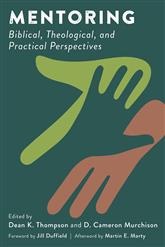formation
Select an item by clicking its checkbox
Growing up in Haïti, the bulk of my knowledge of literature centered on French writers like Descartes, Rousseau, Pascal, Molière, and Voltaire, among others. I did not read Shakespeare until I was in my mid-twenties, and I only recently became aware of George Bernard Shaw’s famous, or ...
In Toward a Theory of Instruction, educator Jerome Bruner insists that a theory of development must be linked both to a theory of knowledge and to a theory of instruction, “or be doomed to triviality.” (Toward a Theory of Instruction, Jerome Bruner, Boston: Harvard University Press, 1974, 192 pages, ISBN 9780674897014, 21). I’ve ...
When teaching on issues of social justice, a faculty’s posture can foster or impede the students’ ability to learn and engage fully in the process. I teach Biblical Interpretation. One of the favorite courses that I have designed and taught is “Hermeneutics for Ministry”. This is a graduate course ...
Students are always already being "formed" in our online classes, whether we mean to have incorporated "formation" into our course designs or not. In this ineluctable process of formation, do the communities of inquiry designed into our online classes align with the norms and values of the communities into which ...

Mentoring: Biblical, Theological, and Practical Perspectives
Date Reviewed: December 13, 2018
In Mentoring: Biblical, Theological, and Practical Perspectives, Thompson and Murchison provide a thoughtful collection of essays on Christian mentorship. As a whole, this collection contributes to the growing body of scholarly work on mentoring by offering “windows on mentoring that are biblically grounded, theologically informed, communally diverse, and generationally attentive” (3). The book is divided into four parts, with each of the fourteen chapters highlighting the twenty-one contributors’ unique analyses and insights on mentoring and being mentored.
Part 1 surveys biblical perspectives on mentoring. As such, it begins with Brueggemann’s consideration of mentoring practices present throughout the Old Testament and concludes with a posthumous essay by Bartlett on passages in the New Testament that help to shed light on contemporary understandings of the term “mentor.”
Part 2 examines the nature and task of mentoring from a variety of theological perspectives and methods. Drawing on the fields of pastoral ministry (Currie), homiletics (Long), ethics (Miles), and feminism (Rigby), the authors provide a range of mentoring models and resources that underscore the importance of positive mentoring relationships and practices in the formation of strong Christian leaders. On this Rebekah Miles writes, “Christian mentoring should include discussion of the ways that our professional goals contribute to the larger goals of Christian life” (83).
Part 3, “Diverse National and International Communities of Mentoring,” explores Christian mentoring practices as shaped by particular contexts, including race, gender, and ethnicity. Those who wish to think critically about dominant systems of oppression, such as racism, xenophobia, and sexism, and to foster concrete practices for inclusive mentoring within biblical-theological frameworks will find a wealth of resources in the essays by Pollard, Cannon, De La Rosa, and Kwok. Of particular note is Canon’s proposal that womanist mentoring is a vocational call, “to do the work your soul must have” (123). This section also includes an historical essay by Johnson on mentoring in the Roman Catholic tradition.
Finally, Part 4 contains three coauthored chapters that discuss mentoring as a mutually supportive practice that occurs across generations. Ottati and Hinson-Hasty’s essay, “Mentoring toward a Humane Disposition, Attitude, and Imagination,” describes mentoring relationships between the teachers and student, while Nishioka and Lowry and Wardlaw and Murray’s essays consider youth and cross-generational mentoring, respectively
The book closes with an afterword by Marty that skillfully and poetically weaves together the insights and value of this collection of essays. He writes, “It is impossible to speak properly about mentoring in entirely impersonal and theoretical terms. Mentoring is and is about a profound personal dimension of scholarly and pastoral work” (223).
Those working in theological schools or departments and in Christian ministry will find this collection of essays to be a valuable resource on the virtue and art of mentoring. The strength of this volume lies not only in its biblical and theological reflections on mentoring, but also in the range of everyday lived experiences and perspectives from which the authors write.


